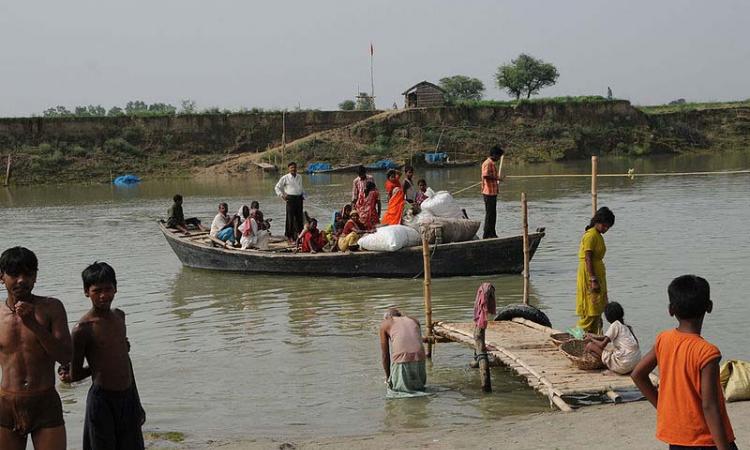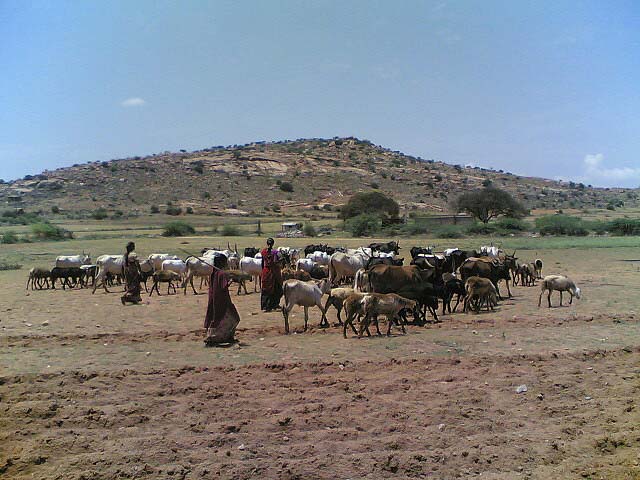
We await a future that could be hotter and drier because of climate change. This is increasingly recognised as a global concern, and available data suggests that it is increasing the frequency and severity of weather-related hazards in South Asia. As per a World Bank report, “Glacier melting in the Himalayas is projected to increase flooding and will affect water resources within the next two to three decades.”
Pressure on natural resources and the environment is set to increase in the region. Though climatic uncertainties have implications on many sectors, changes in climatic patterns will most likely affect rural livelihoods. People in the region will be increasingly vulnerable in the future as these variations affect the natural resource base on which rural livelihoods directly depend.
Climate change has specific gender-related impacts
Though climate change will affect people of all ages, races, religions, and social statuses, women are more likely to be severely affected by it. This is because they are highly dependent on earnings from agricultural labour, livestock rearing and other labour that forests and common lands provide. They also have fewer resources and options to combat the damages to this resource base when compared to men. "Women make up half of the world's population but sadly represent a staggering 70 per cent of the world's poor."
Societal conditioning, which forces many into accepting set norms, continues to deprive them of their social, economic, and political rights and opportunities. Because of this, women are affected more negatively than men because of their lesser ability to deal with shock, stress and change. Their pre-existing vulnerabilities compound in the event of disasters like floods and droughts, which the region is increasingly susceptible to in the context of climate change.
Vulnerability depends in large part on the assets available—physical, financial, human, social, and natural. The more assets there are, the less vulnerable a person is. Worldwide, compared to men, women tend to have more limited access to resources that would enhance their capacity to adapt to climate change, including land, credit, agricultural input, decision-making bodies, technology, and training services. Furthermore, social, economic and political barriers limit their coping capacity.

Failing to address climate change could have serious consequences for women, according to a seminar held at the India Water Week by the India Water Partnership and Water and Power Consulting Services at New Delhi in April 2013. Women play a central role in providing, managing and safeguarding water resources and in producing food. However, they are most affected by poor access to sanitation and drinking water. Climate change would also put extra pressure on their activities, ranging from agriculture, fetching water to fodder and fuelwood collection.
There would be a greater feminization of agricultural labour in the event of climate change. The work involved in removing weeds, a farming operation mostly done by women, would increase. During disasters, women’s opportunity for wage employment declines. Declining food production due to climate change could turn entire populations, particularly men, into migrants. According to Aditi Kapoor, Alternative Futures, a Delhi based NGO, “food insecure women may be vulnerable to greater sexual harassment, trafficking, and a greater incidence of HIV AIDS."
Suruchi Bhadwal, a researcher with The Energy Research Institute, was of the view that “in the case of early warning systems for disasters, men are more equipped to handle situations of extreme distress as compared to women.” This is because they are more connected to public spaces and had better access to formal and informal social networks.
Jakia Akter, Centre for Environment and Geographic Informational Services, Dhaka, Bangladesh, said that more than fifty percent of rural women participate in agricultural activities in Bangladesh. When food production contracts severely, yields of major crops are likely to fall up to 40 per cent. Women are more vulnerable to nutritional problems that arise from this fall, as they are socialised to be self-sacrificing from childhood onward and are the last ones to eat.
Gender mainstreaming cuts across several sectors, be it health or water. Designing gender-sensitive community adaptation programmes is the need of the day. In fact, with effective action and empowerment through policy initiatives, professional networks, grassroots movements, and advocacy, women can be empowered to be proactive players in supporting South Asian initiatives on climate change adaptation, according to Som Nath Poudel, Nepal Water Partnership.
The key messages of the seminar are:
- Gender aspects must be included while planning adaptation strategies.
- Women must tap into their potential and learn to use available water resources fully. Much misery is caused to families and communities due to water stress and it is important that we have a special focus on empowerment, especially for women who carry the greater part of the burden.
- Adaptation is critical to protecting millions of women, and international adaptation efforts must target their needs and priorities.
- Countries and communities will need to work out solutions that suit their local conditions contexts and cultures.
- Managerial capabilities of water-user groups must be strengthened. Reforms that encourage collective participation, especially ones that include women, are needed.
/articles/even-climate-change-discriminates-between-women-and-men